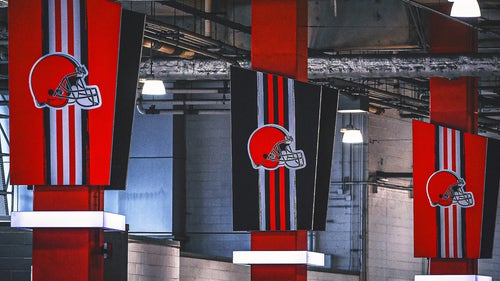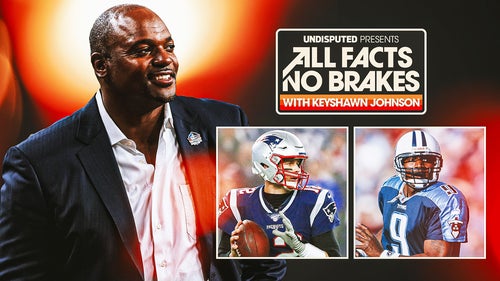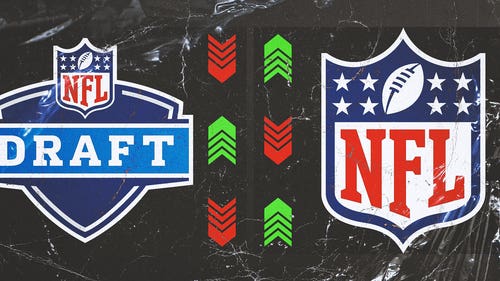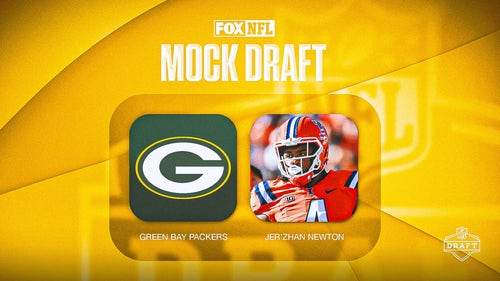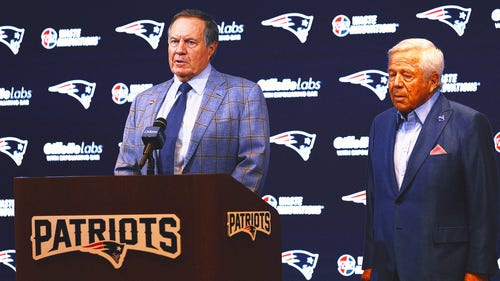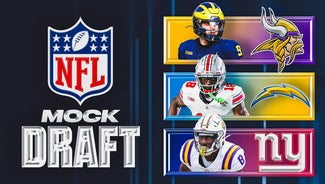
NFL's new breed of TEs flourishing
The Baltimore Ravens created their own internal controversy when safety Ed Reed offered a frank quarterbacking assessment of teammate Joe Flacco.
The big hullabaloo in New England this past week? The “schism” between Rob Gronkowski and Aaron Hernandez over what their dynamic pairing should be called.
Taking a page from Bill Belichick’s Book of Bland, Hernandez joked that “Rob and Aaron” would be a “good one.” Gronkowski entertained “Shake and Quake,” but has his own personal favorite among the possibilities suggested.
“I like the Boston TE Party,” Gronkowski said Wednesday at his locker inside Gillette Stadium. “That was pretty cool.”
If the moniker sticks, Gronkowski and Hernandez should make that party an open house, crank the LMFAO and invite all of their tight-end brethren from around the NFL.
Players at that position have reason to make merry. At no point have so many tight ends made such a positive impact on their teams in the passing game.
Gronkowski (1,327) and New Orleans’ Jimmy Graham (1,310) both exceeded the single-season yardage mark held by the Chargers' Kellen Winslow.
The Denver Broncos and the New York Giants were the only playoff teams that didn’t have at least one tight end with 50 or more catches. The stars of last weekend’s second-round games were Gronkowski (10 catches for 145 yards and three touchdowns against Denver) and the San Francisco 49ers’ Vernon Davis. He channeled the spirit of Dwight Clark with seven receptions for 180 yards and the game-winning score in a 36-32 victory over the Saints.
In 2003, there were four tight ends with 50-plus catches and three with 750-plus yards. There were 17 and 14, respectively, in 2011 — and the numbers are likely to rise in future years because of the coverage headaches being caused.
Defenses are struggling to stop those who can split the seam down the middle of the field or create mismatches as pseudo-wide receivers such as Green Bay’s Jermichael Finley. He is just as likely to line up as a “Y” receiver on the outside of a formation as he is the slot or along the line of scrimmage next to a tackle like the traditional tight end.
“Those are tough matchups defensively because of the size and athleticism of those players,” Belichick said. “It’s hard for any defense to find guys that are 250 pounds that run like these tight ends and have the ball skills that these tight ends have.”
Not that Belichick is complaining. New England’s tight ends are the ones causing the most damage.
Thanks to Gronkowski and Hernandez, the 2011 Patriots set an NFL single-season record with 169 receptions generated at the tight-end position. Gronkowski gets most of the attention because of his dynamic plays and now-trademark “Gronk” spikes following his touchdown grabs. He had 17 this past season, which is another NFL record, and the first time a tight end has ever led the league in scoring catches.
With speed and athleticism that belie his 6-foot-6 frame, Gronkowski is a one-on-one nightmare for whichever safety, cornerback or linebacker draws the assignment. His vast wingspan provides a huge target for quarterback Tom Brady, especially in the red zone. Ravens defensive coordinator Chuck Pagano joked this week that the football looks like a “Twinkie” in Gronkowski’s massive hands.
Defenses, though, can’t sleep on Hernandez or they risk getting burned like the Broncos did twice this season. Hernandez had nine catches for 129 yards and one touchdown in a Week 15 win at Denver, then further showcased his versatility during last Saturday’s 45-10 rout. Seemingly aligned in the backfield as a receiving option, Hernandez instead rushed five times for 61 yards — including a 43-yard spurt that caught Denver napping and helped New England’s offense set the pace on the game’s opening series.
“It’s just amazing the quickness he has being his size,” Gronkowski said of his 6-foot-1, 245-pound teammate.
Asked about defending the Gronkowski-Hernandez pairing in Sunday’s AFC Championship Game, Ravens outside linebacker Terrell Suggs said, “You really can’t. You just have to try and contain it.”
The Ravens have to deal with this headache because of Belichick’s shrewd draft-day maneuvering in 2010. The Patriots traded to move directly ahead of Baltimore in the second and fourth rounds to snag Gronkowski and Hernandez, respectively.
The Ravens, which had strong interest in Gronkowski, took its own pair of tight ends (Dennis Pitta and Ed Dickson) in the fourth and sixth rounds. While not as prolific, Pitta and Dickson are also credible threats with 94 combined catches for 933 yards and eight touchdowns during the regular season. Flacco targeted Pitta and Dickson on eight of his 27 pass attempts in last Sunday’s 20-13 playoff win over Houston. The duo produced 43 yards on three catches.
Belichick was first exposed to the benefits that two skilled receiving tight ends could provide in the mid-1970s. He was on the Detroit Lions coaching staff that featured David Hill and future Hall of Fame selection Charlie Sanders.
Belichick saw the position evolve further with the emergence of San Diego’s Winslow in the early 1980s and the way late Chargers head coach Don Coryell would utilize his TEs. Winslow led a group that combined for 163 receptions in 1984, which was the NFL team single-season record until New England’s exploits in 2011.
Belichick said the gradual downplaying of the traditional fullback led to the rise of tight ends who could handle both blocking and receiving duties.
“Even if you do have a fullback, he’s not in the game the percentage that he was going back to the ’70s and ’80s where teams carried at least two fullbacks,” said Belichick, whose team carries one traditional fullback (Lousaka Polite) on its roster. “You have a lot of teams that don’t carry any.”
Tight ends such as Tony Gonzalez, Shannon Sharpe and Antonio Gates continued to revolutionize the position with their receiving prowess during the past two decades. This created a copycat effect around the league from offensive gurus looking for new wrinkles in their passing attacks.
“There’s definitely a big-time change,” said Atlanta tight end Reggie Kelly, a 1999 second-round draft choice. “When I first got into the league, you mostly had guys who were blockers first and receivers second, like Howard Cross, Mark Chmura and Mark Bruener. Teams focused on having a really good blocking tight end to stabilize their running game.
“Things have changed, but that’s a good thing. And if you’ve noticed, every team has at least one or two blocking tight ends. They’re very valuable assets.”
But the days of drafting one-dimensional players, such as Kyle Brady, with the No. 9 pick in the draft like the New York Jets did in 1995 are long gone. Tight ends with pass-catching skills are in much greater demand. That’s why the Patriots and Saints gambled the way they did with their projections on Gronkowski and Graham. Coming off a junior season in which he didn’t play because of back surgery, Gronkowski was chosen in the second round. Graham went to New Orleans one round later even though he was a college basketball reserve who only played one year of football at the University of Miami.
“It’s hard to find that skill set where the guy is a point-of-attack blocker on 30 plays a game and has the same top-of-the-league type receiving skills, too,” Belichick said. “You find guys that have that, that really makes them special.”
It’s also a reason to celebrate — which is what the Patriots will be doing if Gronkowski and Hernandez help lead New England back to the Super Bowl.
Alex Marvez and co-host Gil Brandt interviewed Reggie Kelly on Sirius XM NFL Radio.







































































































































